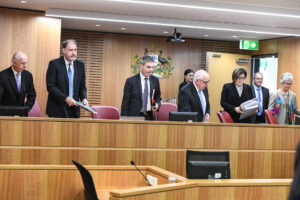The latest labour account survey released by the Bureau of Statistics revealed that while job growth remains solid and the job vacancy rate is at record levels, workers real incomes remains at best flat.
As we now enter a phase where the Reserve Bank is raising interest rates in an effort to reduce demand in the economy and keep down inflation and prices and wages, labour market policy director, Greg Jericho, notes in his Guardian Australia column that workers risk seeing their real wages continue to fall.
It is clear that the major pressures for inflation have come not from labour costs but from the input costs of goods and material. While these costs have been passed on to consumers, there has been much less flow through to workers.
While the Reserve Bank notes that there are some signs of rising wages, these will inevitably be reduced due to the impacts of rising interest rates.
After a year in which real wages have plummeted, the recovery is very much looking like one where company profits have risen, but where workers will miss out on wage growth that would undo the damage of the past year.

Between the Lines Newsletter
The biggest stories and the best analysis from the team at the Australia Institute, delivered to your inbox every fortnight.
You might also like
Analysis: Will 2025 be a good or bad year for women workers in Australia?
In 2024 we saw some welcome developments for working women, led by government reforms. Benefits from these changes will continue in 2025. However, this year, technological, social and political changes may challenge working women’s economic security and threaten progress towards gender equality at work Here’s our list of five areas we think will impact on
The continuing irrelevance of minimum wages to future inflation
Minimum and award wages should grow by 5 to 9 per cent this year
If business groups had their way, workers on the minimum wage would now be $160 a week worse off
Had the Fair Work Commission taken the advice of business groups, Australia lowest paid would now earn $160 less a week.



